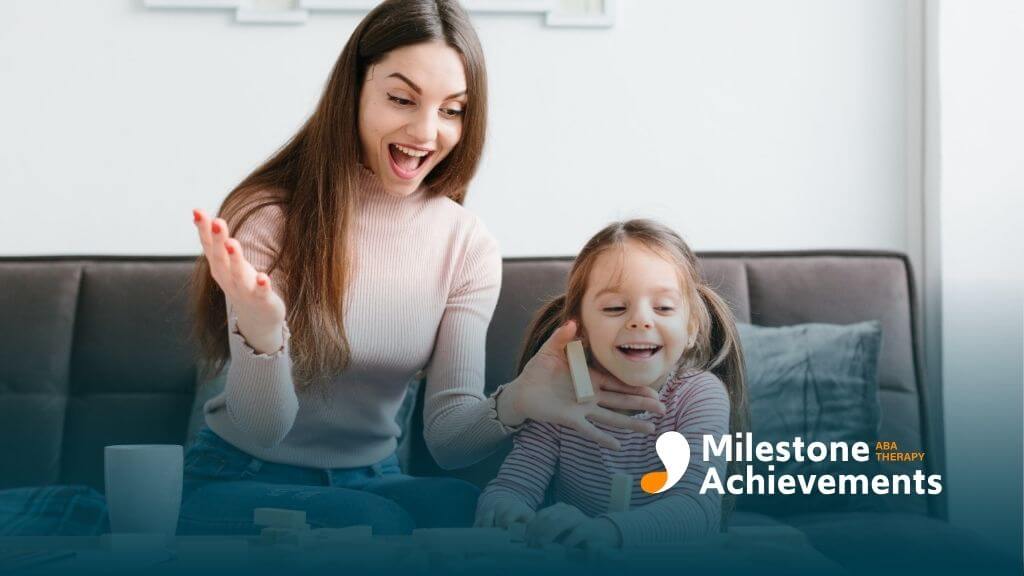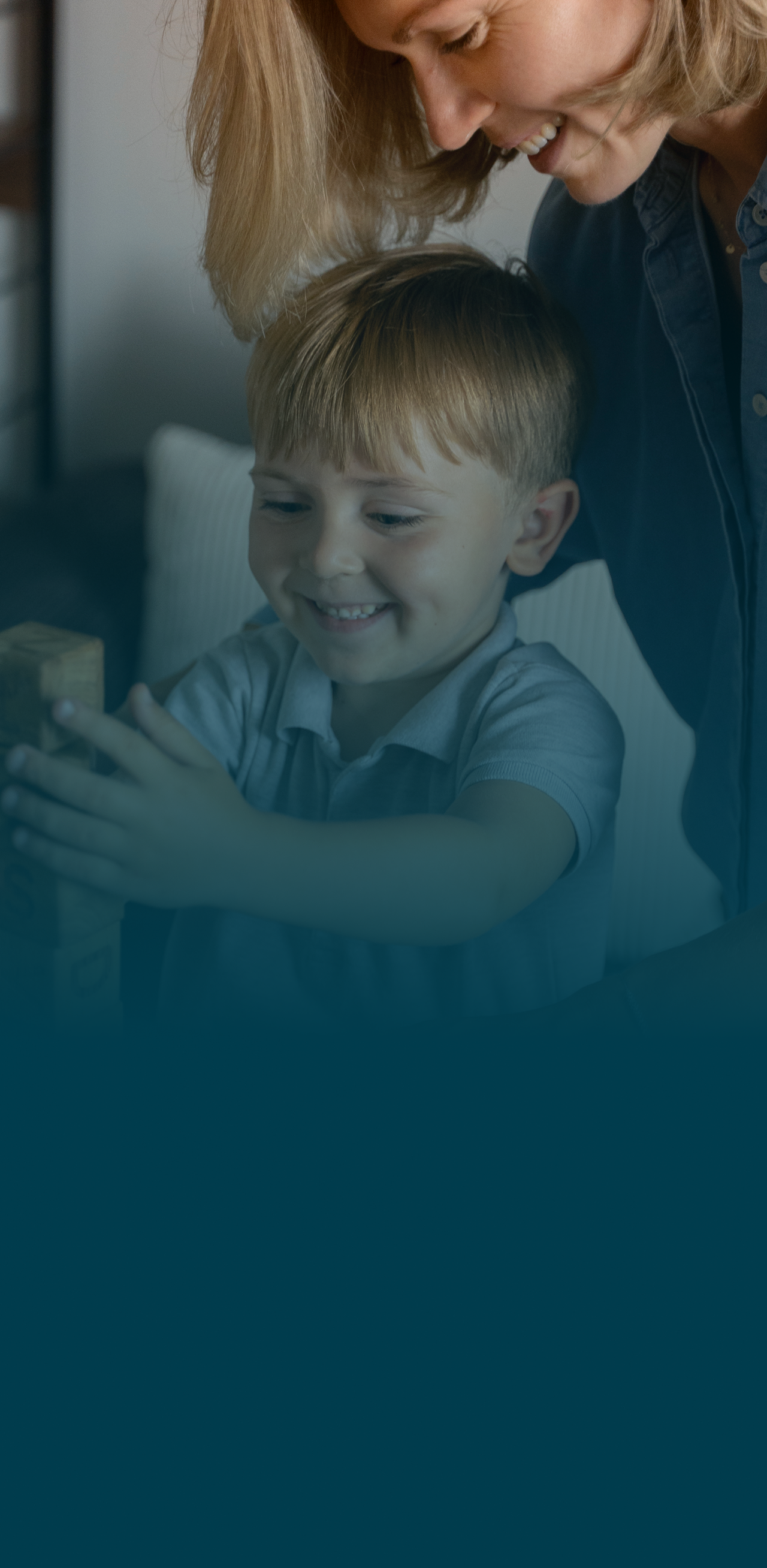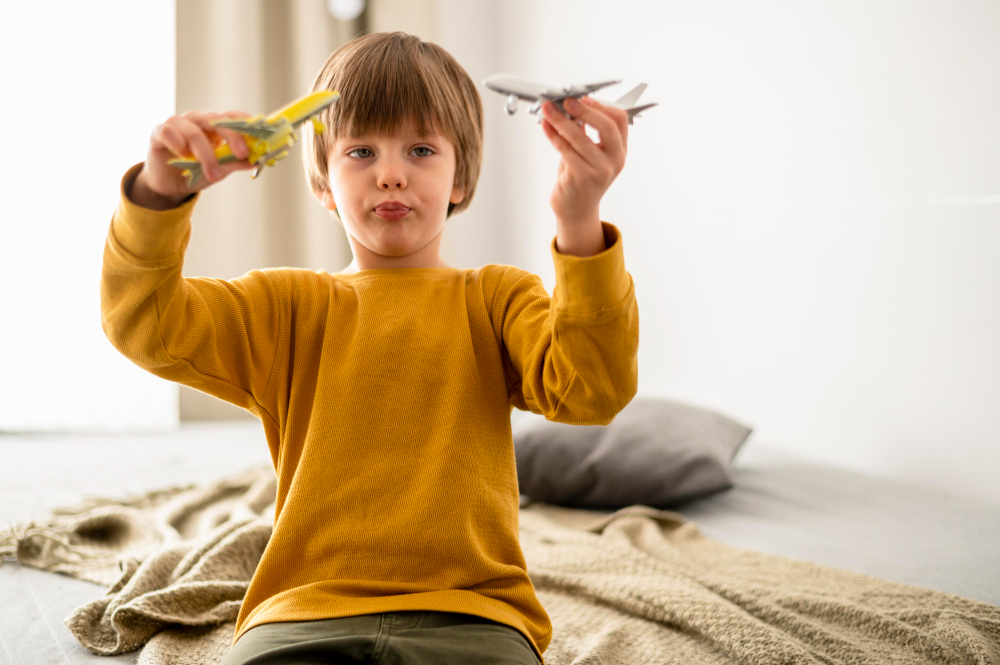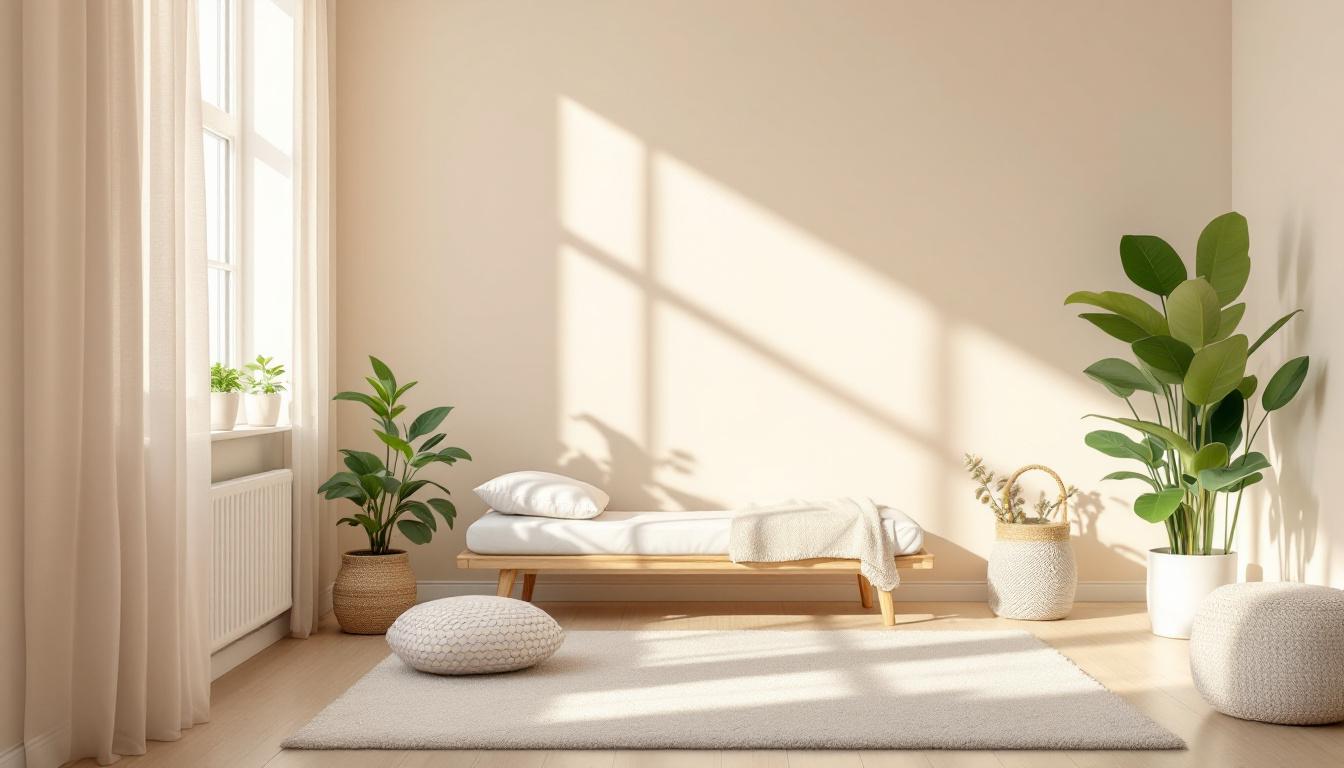
What Do Kids Do in ABA Therapy Sessions?
Discover what a day in ABA therapy looks like. Learn how kids build communication, emotional, and life skills through fun, structured, and encouraging activities.
In ABA therapy, kids don’t just sit at a desk and do “drills.” They play, move, talk, practice real-life skills, and learn how to handle big feelings in a way that fits their age and personality. The whole process is designed to help them be more independent, confident, and connected to the people around them.
Let’s walk through what actually happens in ABA therapy, in simple, real-world terms.
What Does a Typical ABA Session Look Like?
No two ABA sessions are exactly the same, but there are common patterns. Sessions may happen at home, in a clinic, in the community, or even at school, depending on the program.
Here’s a general idea of what kids actually do during a session.
Warming up and building comfort
Kids don’t usually jump straight into “work mode.”
The beginning of a session often includes:
- Saying hello and checking in
- A short, fun activity (like a favorite toy or game)
- Letting the child show what they’re interested in that day
This warm-up time helps the child feel safe and comfortable. It also helps the therapist see how the child is doing—tired, energetic, calm, frustrated—so they can adjust the session.
Structured learning time
After warming up, many kids move into more structured activities. This might include things like:
- Discrete Trial Training (DTT):
Skills are taught step-by-step.- The therapist gives a simple instruction (like “Touch your nose”).
- The child responds.
- The therapist gives feedback and a reward if needed (praise, high-five, a small toy, etc.).
- Verbal Behavior (VB):
Focuses on communication—asking for things, labeling items, answering questions.- Asking for a snack
- Naming colors or animals
- Answering “what” or “who” questions
These activities are short and quick. Kids don’t sit and do the same thing for an hour. Therapists mix in breaks, movement, and play.
Natural environment teaching and play
ABA doesn’t stay at the table.
Therapists also teach skills during natural activities, such as:
- Playing on the floor with cars or dolls
- Doing arts and crafts
- Having a snack
- Playing outside or on the playground
During these moments, therapists might:
- Prompt the child to ask for a toy
- Encourage sharing and turn-taking
- Model how to join a game
- Practice following simple directions in real time
This helps kids use their skills in real life, not just in a structured setting.
https://www.youtube.com/shorts/NCHir3RQgk0
Cool-down and review
Toward the end of the session, things usually slow down a bit.
The therapist might:
- Do a calmer activity (reading a book, simple puzzle, drawing)
- Review a few skills practiced during the session
- Share updates with parents or caregivers
Parents often get a quick summary: what went well, what was hard, and what they can try at home.
Common Activities Kids Do in ABA Therapy
Let’s get more specific. Here are the types of activities kids typically do in ABA, and what those look like in everyday language.
Communication and language activities
Many children in ABA are working on communication—using words, gestures, pictures, or devices. Activities might include:
- Requesting:
- Asking for toys, snacks, help, or a break
- Using words, sign language, or a communication app
- Labeling:
- Naming animals, colors, body parts, foods, or people
- Identifying pictures in books
- Answering questions:
- “What is this?”
- “Who is that?”
- “Where is the ball?”
- Conversation practice:
- Taking turns talking
- Saying “hi” and “bye”
- Talking about favorite topics
All of this is practiced in simple, fun ways—no long lectures, just short, repeated practice paired with things the child enjoys.
Play and social skills activities
Play is a big part of therapy, especially for younger kids.
Therapists might use:
- Turn-taking games:
- Rolling a ball back and forth
- Board games or simple card games
- Taking turns on the slide or swing
- Imaginative play:
- Pretend cooking, doctor, or grocery shopping
- Playing “house” or “school”
- Using dolls or action figures to act out simple stories
- Peer play (when available):
- Playing in small groups
- Practicing how to join a game
- Learning to share toys and space
The goal is to help kids feel more comfortable playing with others, not just near others.
Daily living and self-care skills
A huge part of ABA is helping kids be more independent in daily routines. Activities can include:
- Personal hygiene:
- Washing hands step-by-step
- Brushing teeth
- Combing hair
- Dressing skills:
- Putting on socks and shoes
- Zipping a jacket
- Choosing weather-appropriate clothes
- Eating skills:
- Using utensils
- Trying new foods slowly and safely
- Sitting at the table for meals
Therapists break each task into very small, doable steps. Kids are praised and supported as they master each part.
Behavior and emotional regulation activities
Children in ABA often work on understanding and managing their own behavior and emotions. Activities might look like:
- Learning replacement behaviors:
- Saying “help” instead of crying
- Asking for a break instead of running away
- Using a calm-down strategy instead of hitting
- Emotion identification:
- Naming feelings (happy, sad, angry, frustrated, excited)
- Matching faces to emotions
- Talking about what to do when they feel a certain way
- Coping skills:
- Deep breathing
- Squeezing a stress ball
- Using a calm-down corner
- Asking for a hug, quiet time, or a preferred activity
The focus is never on “punishing” feelings. It’s about giving kids tools so they know what to do with those feelings.
School readiness and academic foundations
For kids getting ready for preschool or elementary school, ABA may include pre-academic or school-readiness activities, such as:
- Sitting at a desk or table for short times
- Following group instructions like “Clean up” or “Line up”
- Matching and sorting shapes, colors, or letters
- Learning to write or trace their name
- Listening to a story and answering simple questions
These skills help kids feel more prepared and confident in a classroom environment.
Gross motor and movement-based activities
Not all learning happens while sitting down. Many kids need movement and sensory input. ABA therapists often include:
- Obstacle courses
- Jumping, hopping, or balancing games
- Simple “Simon Says” activities
- Movement breaks between tasks
This helps kids stay regulated and engaged, especially those who have a lot of energy or sensory needs.
How ABA Therapy Helps Kids Learn Without Feeling Overwhelmed
ABA looks at how a child learns best. Then it shapes activities around that.
Breaking skills into small steps
Big skills can feel overwhelming. So ABA breaks them into tiny steps. For example, “brush your teeth” becomes:
- Pick up toothbrush
- Put toothpaste on brush
- Brush top teeth
- Brush bottom teeth
- Rinse
Kids learn each step at their own pace. As they master one step, we add the next. This creates confidence instead of frustration.
Using motivation and rewards
ABA uses positive reinforcement to encourage learning. That means pairing hard work with things the child loves, such as:
- Praise (“You did it!”)
- Stickers, tokens, or small rewards
- A few minutes with a favorite toy or game
- High-fives, hugs (if the child likes them), or silly dances
The goal is not to “bribe” kids, but to make learning feel enjoyable and worth the effort.
Practicing skills in different places
A child might learn a skill at the table, but we want them to use it everywhere. So ABA focuses on generalization—using skills in different settings.
That might look like:
- Asking for help at the table
- Then asking for help during play
- Then asking for help at home with parents
- Then asking for help at school or in the community
This is how skills turn into real-life independence.
What Parents See and Do in ABA Therapy
ABA therapy works best when parents and caregivers are involved.
Here’s how families are usually part of the process:
Watching or joining sessions
Parents may:
- Observe parts of sessions
- Join in on certain activities
- See how therapists give instructions and use reinforcement
This makes it easier to copy those strategies at home.
Parent training and coaching
Many ABA programs include parent training. That might involve:
- Learning how to respond to challenging behavior in a calm, consistent way
- Practicing how to encourage communication at home
- Using simple visuals, schedules, or routines
- Learning how to give clear instructions and follow through
The idea is to make sure your child sees the same expectations and supports across settings, which helps them progress faster.
Home practice and support
Therapists often give suggestions for what to practice between sessions, such as:
- Encouraging your child to ask for snacks using words or pictures
- Practicing simple routines like bedtime or morning checklists
- Working on one or two communication or social goals during play
Small, consistent practice at home can make a huge difference over time.
At Milestone Achievements, we believe ABA therapy should feel respectful, supportive, and encouraging—for both kids and parents. We focus on real-life progress, not just checking boxes on a worksheet.
When children come to us for ABA therapy in Georgia, we:
- Create personalized treatment plans based on your child’s strengths, needs, and interests
- Use play-based, child-centered activities to keep sessions engaging and fun
- Focus on communication, social skills, daily living skills, and behavior support
- Collaborate closely with parents, schools, and other providers
- Provide services designed to fit your family’s routine as much as possible
We’re not just here to run sessions. We’re here to walk alongside you, explain what’s happening, celebrate the wins, and support you through the tough days too.
Ready to take the next step?
Reach out today, and let’s work together to help your child reach their next milestone.
Sources:
- https://psycnet.apa.org/record/2019-11201-015
- https://www.autismspeaks.org/applied-behavior-analysis
- https://my.clevelandclinic.org/health/treatments/25197-applied-behavior-analysis
- https://www.autismparentingmagazine.com/aba-therapy-activities-guide/
- https://www.autismspeaks.org/applied-behavior-analysis


Partner with us on your child's journey
Milestone Achievements offers evidence-based ABA therapy to help children with autism reach their full potential. Together we’ll set meaningful goals and celebrate progress every step of the way.
Start ABA Services TodayFrequently Asked Questions (FAQs)
Is ABA therapy only for children with autism?
No. ABA therapy is very common for children with autism, but it can also support kids with other developmental delays, behavioral challenges, or social and communication difficulties. The strategies are flexible and can be tailored to many different needs.
How many hours of ABA therapy do kids usually get?
It depends on the child. Some children receive a few hours a week, while others may have more intensive programs with many hours. The treatment team looks at your child’s needs, age, and goals to recommend an appropriate schedule—and you’re always part of that decision.
Will my child still have time to just be a kid?
Yes. A good ABA program respects your child’s need for play, rest, and family time. Sessions are built to be engaging and fun, and many activities look and feel like play. The goal is not to take away childhood—it’s to give your child skills that make childhood (and beyond) more enjoyable and successful.






